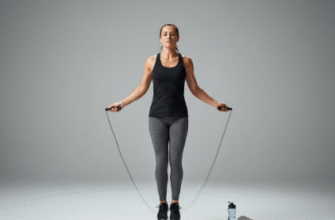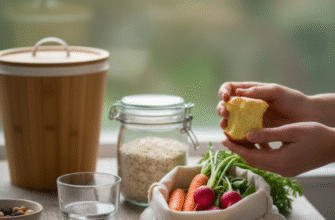Our joints work hard for us every single day, allowing us to walk, run, bend, lift, and simply move through life. Thinking about how to support them isn’t just something for later years; it’s about maintaining comfort and freedom of movement right now and for the future. Incorporating some mindful practices into your daily routine can make a real difference in how your joints feel and function. It’s less about drastic changes and more about consistent, gentle attention to how we use our bodies.
Keep Moving, Gently Does It
Movement is often described as lotion for the joints. Think of your joints like hinges on a door – if they sit unused for too long, they can get stiff and creaky. Regular, gentle movement helps to keep the fluid within the joint circulating, which nourishes the cartilage and keeps everything moving smoothly. The key here is consistency and choosing activities that are kind to your body.
Low-impact exercises are fantastic choices because they get your heart rate up and work your muscles without putting excessive pounding stress on your joints. Consider incorporating activities like:
- Swimming or water aerobics: The buoyancy of water supports your body weight, taking the pressure off joints while still providing resistance for a good workout.
- Cycling: Whether outdoors or on a stationary bike, cycling offers a smooth, repetitive motion that benefits knees and hips without harsh impact. Ensure your bike is adjusted correctly for your height.
- Walking: A simple yet effective way to stay active. Choose supportive footwear and try walking on softer surfaces like grass or tracks when possible.
- Yoga or Tai Chi: These practices focus on slow, controlled movements, flexibility, and balance, all of which can contribute positively to joint comfort and range of motion.
Remember to always warm up before starting any activity, even a walk. Gentle stretches and light cardio prepare your muscles and joints for the work ahead. Similarly, a cool-down period with more stretching helps improve flexibility and aids recovery. Listen to your body; gentle activity should feel good, not cause sharp pain. Pushing too hard, too fast, can lead to strain.
Finding Your Comfortable Weight
Carrying extra pounds places additional mechanical stress on weight-bearing joints, particularly the knees, hips, and back. Imagine carrying a heavy backpack all day – eventually, your shoulders and back would feel the strain. Similarly, excess body weight adds constant pressure to your joints with every step you take. Maintaining a weight that feels comfortable and healthy for your individual frame can significantly reduce this daily load.
This isn’t about crash diets or extreme measures. It’s about finding a sustainable balance through sensible eating habits and regular physical activity. Focusing on whole foods, portion awareness, and consistent movement contributes not only to weight management but also to overall well-being, which naturally supports all your body’s systems, including your joints.
Posture Matters More Than You Think
How you sit, stand, and lift objects throughout the day has a cumulative effect on your joints. Poor posture can create imbalances, forcing some joints and muscles to work harder than others, leading to strain and discomfort over time. Cultivating good posture habits helps distribute your body weight more evenly, reducing unnecessary stress.
Sitting Right
Many of us spend hours sitting. Aim to sit with your back straight and supported, perhaps using a cushion for lower back support. Your feet should rest flat on the floor (or on a footrest), with your knees roughly level with your hips. Avoid slouching or hunching over your desk or keyboard. Get up and move around every 30-60 minutes to prevent stiffness.
Standing Tall
When standing, try to distribute your weight evenly on both feet. Keep your shoulders relaxed and pulled back slightly, not slumped forward. Imagine a string pulling you gently upwards from the crown of your head. Avoid locking your knees.
Lifting Smart
When lifting anything, even moderately heavy objects, bend at your knees and hips, not your waist. Keep the object close to your body and use the power of your legs to lift, keeping your back straight. Avoid twisting while lifting.
Consistent low-impact movement is beneficial. Regular activities like walking, swimming, or cycling help maintain joint flexibility and function without excessive strain. Remember to warm up before and cool down after exercise. Listen to your body and avoid pushing through sharp pain.
Hydration and Nourishing Your Body
Staying well-hydrated is crucial for overall health, and that includes supporting your joints. Water is a key component of the synovial fluid that lubricates joints and the cartilage that cushions them. While drinking water won’t magically fix joint issues, being chronically dehydrated certainly doesn’t help matters. Aim for consistent water intake throughout the day.
Good nutrition plays a role in supporting your entire body. A balanced diet rich in fruits, vegetables, lean proteins, and whole grains provides the building blocks and energy your body needs to maintain and repair tissues, including those around the joints. While specific foods aren’t cures, focusing on overall healthy eating patterns contributes to general wellness which can positively influence how your joints feel.
Tune In: Listen to Your Body’s Signals
Your body often sends signals when something isn’t quite right. It’s important to learn the difference between the mild muscle soreness that can accompany new activity (which usually fades) and sharp, persistent, or worsening pain, which might indicate that you’re overdoing it or need to adjust your approach. Pushing through significant pain is rarely a good idea and can sometimes lead to bigger problems.
Don’t underestimate the power of rest. If your joints feel tired or achy, give them a break. This doesn’t necessarily mean complete inactivity, but perhaps switching to a gentler activity or simply reducing the intensity or duration for a day or two. Balancing activity with adequate rest allows your body time to recover and repair.
Ease the Tension: Stress and Your Joints
Stress can manifest physically in many ways, including muscle tension. When you’re stressed, you might unconsciously clench your jaw, hunch your shoulders, or tighten muscles throughout your body. This chronic tension can put added strain on nearby joints. Finding healthy ways to manage stress can therefore have indirect benefits for your joint comfort.
Explore relaxation techniques that work for you. This could be deep breathing exercises, meditation, spending time in nature, listening to music, engaging in hobbies you enjoy, or simply making time for quiet reflection. Even short breaks during a busy day to consciously relax your muscles can make a difference.
Support from the Ground Up: Footwear Choices
Your feet are your foundation. The shoes you wear can affect the alignment of your entire body, from your ankles up through your knees, hips, and even your back. Shoes that lack proper support, cushioning, or fit can contribute to uneven weight distribution and increased stress on certain joints. Conversely, well-fitting, supportive footwear can help promote better alignment and absorb shock, especially during activities like walking or standing for long periods.
Pay attention to how your shoes feel and how worn they are. If you participate in specific sports or activities regularly, investing in appropriate footwear designed for that activity can provide necessary support and potentially reduce strain on your joints.
Supporting your joint health is an ongoing process woven into your daily lifestyle. By focusing on gentle movement, maintaining a comfortable weight, practising good posture, staying hydrated, eating nutritiously, listening to your body, managing stress, and choosing supportive footwear, you create a foundation for greater comfort and mobility. These everyday habits are investments in feeling your best as you move through life.








